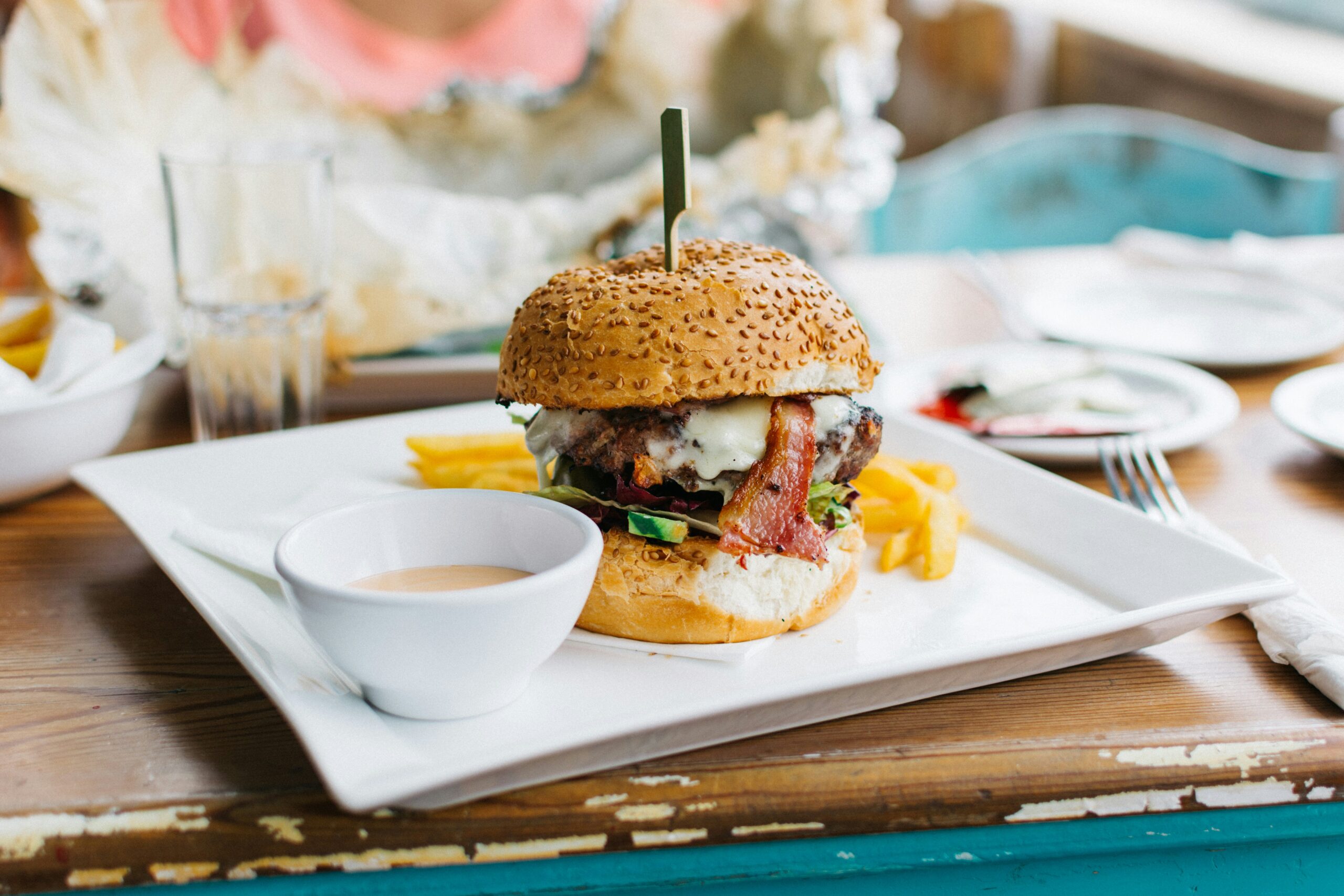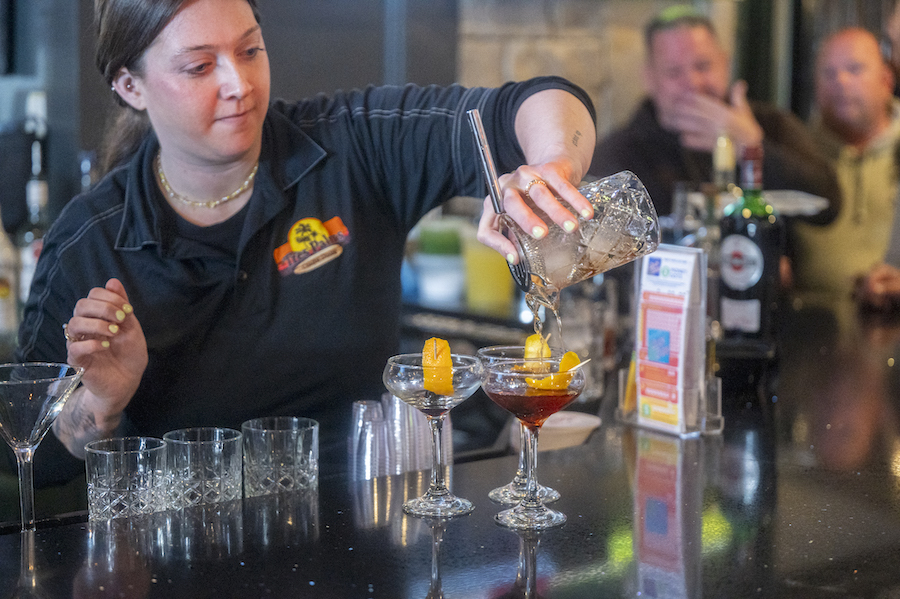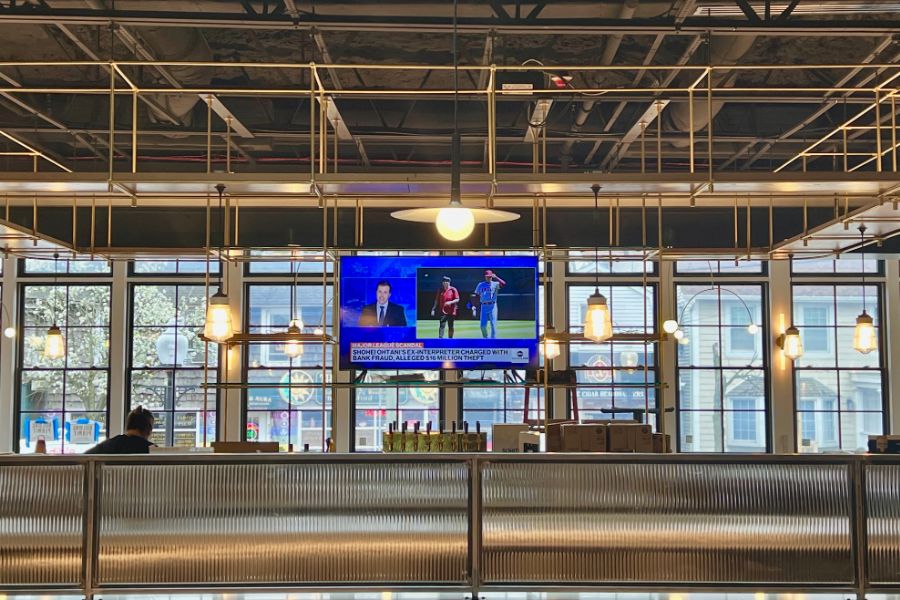
Greater Babylon coverage is funded in part by The Argyle Theatre, where Broadway comes to Babylon. Click here for tickets to ‘A Bronx Tale,’ performing April 25 to June 16.
by Karl Grossman |
“America has been losing over 40 acres of farmland every hour to development,” said the letter I just received from the American Farmland Trust.
“This land—the most fertile soil in the world—is irreplaceable and urgently needed to grow food. It’s a national disgrace on a catastrophic scale.”
With the letter was an American Farmland Trust bumper sticker: “No Farms No Food.”
The threat to farmland in the United States has been mirrored in the threat to farmland in Suffolk County. But the county’s visionary Farmland Preservation Program has met the threat and been central in keeping Suffolk a top agricultural county in New York State — and so much of it green.
Not only do the farms of Suffolk, on some of the best soils on the planet, produce food and other agricultural products, but they are integral to the thriving tourism industry in Suffolk.
However, the Long Island Pine Barrens Society brought a lawsuit that claimed allowing “structures” on preserved farmland permitted by amendments to the program approved by the Suffolk Legislature was not legal. And a state Supreme Court justice last year ruled in favor of the society’s lawsuit.
Justice Thomas Whelan “basically misconstrued what the county’s original intent was — to prevent the development of farmland but still allow typical and acceptable farm practices to be utilized,” says state Assemblyman Fred Thiele, an attorney whose district includes parts of Shirley and Mastic and all of East Moriches and Center Moriches.
The Farmland Preservation Program “didn’t freeze in a moment of time” structures that could be on a farm. Farmers who have put their land into preservation under the program, said Thiele, have been “entitled” to build sheds, barns and other structures “as long as they complied with the definition of agricultural practices. The idea was that farming is dynamic and that there would have to be changes in the future.”
It’s unfortunate that the judge didn’t understand this.
His ruling is on appeal with the county having retained a law firm that has long fought for the environment, Riverhead-based Twomey, Latham, Shea, Kelley and Quartararo. Handling the appeal is a partner in the firm, Lisa Clare Kombrink, who has a specialty in farmland preservation as former Southampton Town attorney and in other public legal positions.
John v.H. Halsey, president of the Peconic Land Trust, itself long involved in conservation including of farmland, commented last week: “If we want farmland to be farmed we have to allow farmers to do what we told them they could do when they sold their development rights. They retained the right to build structures. They never sold that right to the county and the county didn’t buy it.
“Suffolk’s Farmland Preservation Program, the first of its kind in the country, was created to protect not only farmland but farming. Farm operations by definition are the land, the structures, the improvements and the practices necessary to perform agricultural production.”
Suffolk County is with vigor challenging the lawsuit and ruling which threaten Suffolk’s Farmland Preservation Program.
Conceived by County Executive John V. N. Klein, the program, begun in 1974, is based on the brilliant and then novel idea of purchase of development rights. Farmers are paid the difference between the value of their land in agriculture and what they could get for it if they sold it off for development. In return, the land is kept in agriculture in perpetuity. The Suffolk program has been emulated across the nation.
Suffolk’s current county executive, Steve Bellone, says: “We believe the findings in this lawsuit strike at the very heart of agricultural success in Suffolk County. Support structures on agricultural land have always been an essential and inherent component of agricultural production.”
The Suffolk Legislature has been standing strong in the challenge.
Rob Carpenter, administrative director of the Long Island Farm Bureau, explains that “in this day and age, farmers can’t just go out and put a seed in the ground and watch it grow. Farming today is very sophisticated and complicated.”
Greenhouses are used. Crops need to be stored in a building — “they can’t be left out in the field in the hot sun.” Farmers utilize large pieces of equipment and they “need to be sheltered.” In some instances, deer fencing is necessary.”
He said last week: “No farmer is going to preserve their land if they can’t continue as a farm operation and that means with modern agriculture having the necessary infrastructure in order to farm.”
Legislator Al Krupski of Cutchogue, who is a fourth-generation Suffolk farmer, said last week that the hope is that what has happened is a “temporary setback” of the county’s Farmland Preservation Program.
He said: “We want to restore confidence in this historic program.”
Top photo: The hops field at the Plant Connection property on Sound Avenue.
Credit: Krysten Massa/Riverhead News-Review
























